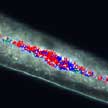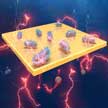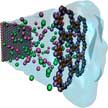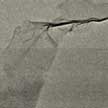Showing Spotlights 25 - 32 of 152 in category All (newest first):
 Although solar-driven water evaporation using sunlight is a promising sustainable strategy, the water production rate via solar technologies remains insufficient to meet practical demands. Addressing this issue, researchers have developed a solar absorber gel to purify water from contaminated sources using only natural sunlight. The hydrogel can force liquid water out of the gel via phase transition when the sun warms the material, so the water purification mechanism does not require water evaporation.
Although solar-driven water evaporation using sunlight is a promising sustainable strategy, the water production rate via solar technologies remains insufficient to meet practical demands. Addressing this issue, researchers have developed a solar absorber gel to purify water from contaminated sources using only natural sunlight. The hydrogel can force liquid water out of the gel via phase transition when the sun warms the material, so the water purification mechanism does not require water evaporation.
Apr 13th, 2021
 While plastic debris of any size is harmful to the marine flora and fauna, recent research suggests that the smallest of these plastics, nanoplastics, affect the composition and diversity of our intestinal microbiome and that this can cause damage to our health. A novel optical spectroscopy-based methodology in the VIS-NIR range, capable for differentiating between chemically different micro- and nanoplastics confined within invertebrate intestines. The technology is based on dark-field microscopy, which is capable of visualizing particles smaller than the bright-field optical microscopy resolution limit.
While plastic debris of any size is harmful to the marine flora and fauna, recent research suggests that the smallest of these plastics, nanoplastics, affect the composition and diversity of our intestinal microbiome and that this can cause damage to our health. A novel optical spectroscopy-based methodology in the VIS-NIR range, capable for differentiating between chemically different micro- and nanoplastics confined within invertebrate intestines. The technology is based on dark-field microscopy, which is capable of visualizing particles smaller than the bright-field optical microscopy resolution limit.
Dec 22nd, 2020
 Researchers show that a nanoporous MoS2 membrane allows a higher water flux compared with other 2D materials such as graphene, boron nitride and phosphorene. The team dug deeply into the physical reasons behind why MoS2 performed better than other two-dimensional materials in water desalination processes. Through molecular dynamics simulation, they found out that water density near a MoS2 membrane is lower compared to that near other materials, which indicates that water molecules were more likely to transport through the membrane instead of accumulating around it.
Researchers show that a nanoporous MoS2 membrane allows a higher water flux compared with other 2D materials such as graphene, boron nitride and phosphorene. The team dug deeply into the physical reasons behind why MoS2 performed better than other two-dimensional materials in water desalination processes. Through molecular dynamics simulation, they found out that water density near a MoS2 membrane is lower compared to that near other materials, which indicates that water molecules were more likely to transport through the membrane instead of accumulating around it.
Jul 3rd, 2020
 Siloxanes - a class of manufactured silicone derivatives, also know as silicones - are widely used (with an annual volume of 2.8 million tonnes in 2018) in medicine and industrial applications, mostly though in cosmetics and personal care products. However, siloxanes can also be organic contaminants that are persistent and prone to bio accumulation, making it challenging to remove them from various environmental media. Developing suitable sorbents is a cost-effective solution for the removal of siloxanes and Machine Learning offers a powerful tool to identify the effective zeolites out of many millions.
Siloxanes - a class of manufactured silicone derivatives, also know as silicones - are widely used (with an annual volume of 2.8 million tonnes in 2018) in medicine and industrial applications, mostly though in cosmetics and personal care products. However, siloxanes can also be organic contaminants that are persistent and prone to bio accumulation, making it challenging to remove them from various environmental media. Developing suitable sorbents is a cost-effective solution for the removal of siloxanes and Machine Learning offers a powerful tool to identify the effective zeolites out of many millions.
Apr 21st, 2020
 Researchers have identified the potential of using nanoscale carbon dots on bacteria for augmented bioelectricity production. They used this to demonstrate a novel method for significantly increasing the bacterial bioelectricity generation and applied it to set up microbial fuel cells. The results show that carbon dots' highly conductive carbon core not only improved overall systemic electrical conductivity but could also increase the packing density of the electron transfer path. This significantly improves the bioelectricity production of microbial fuel cells.
Researchers have identified the potential of using nanoscale carbon dots on bacteria for augmented bioelectricity production. They used this to demonstrate a novel method for significantly increasing the bacterial bioelectricity generation and applied it to set up microbial fuel cells. The results show that carbon dots' highly conductive carbon core not only improved overall systemic electrical conductivity but could also increase the packing density of the electron transfer path. This significantly improves the bioelectricity production of microbial fuel cells.
Mar 19th, 2020
 Around the world, research teams are addressing the rising global demand of water via the development of sustainable and straightforward technologies that make use of what nature has to offer. Researchers have now reported a hydrophilic and self-floating photothermal foam that shows high-rate evaporation without additional components, enabling an elegant and simple approach for water harvesting through solar evaporation. This photothermal foam enables an elegant and simple approach for water harvesting by utilizing energy from natural sunlight.
Around the world, research teams are addressing the rising global demand of water via the development of sustainable and straightforward technologies that make use of what nature has to offer. Researchers have now reported a hydrophilic and self-floating photothermal foam that shows high-rate evaporation without additional components, enabling an elegant and simple approach for water harvesting through solar evaporation. This photothermal foam enables an elegant and simple approach for water harvesting by utilizing energy from natural sunlight.
Mar 10th, 2020
 Reverse osmosis (RO) is one of the most effective desalination technologies for producing freshwater from seawater. The reverse osmosis membrane water reclamation processes is very energy intensive - not exactly an advantage given the rising cost of energy and the negative climate impact of fossil fuels. In a new study, researchers found that metal-organic frameworks (MOF) allow higher water flux compared to other 2D materials while rejecting almost 100% of unwanted ions.
Reverse osmosis (RO) is one of the most effective desalination technologies for producing freshwater from seawater. The reverse osmosis membrane water reclamation processes is very energy intensive - not exactly an advantage given the rising cost of energy and the negative climate impact of fossil fuels. In a new study, researchers found that metal-organic frameworks (MOF) allow higher water flux compared to other 2D materials while rejecting almost 100% of unwanted ions.
Dec 11th, 2019
 Researchers have produced graphene by molten carbonate electrolytic splitting of CO2 to a nano-thin carbon product (carbon nanoplatelets) comprised of 25 to 125 graphene layers, and subsequent electrochemical exfoliation of the nanoplatelets to graphene in a carbonate soluble aqueous solution. The sole products of the carbon dioxide electrolysis are straightforward: high yield carbon nanoplatelets and oxygen. The carbon nanoplatelets provide a thinner starting point than a conventional graphite reactant to facilitate electrochemical exfoliation.
Researchers have produced graphene by molten carbonate electrolytic splitting of CO2 to a nano-thin carbon product (carbon nanoplatelets) comprised of 25 to 125 graphene layers, and subsequent electrochemical exfoliation of the nanoplatelets to graphene in a carbonate soluble aqueous solution. The sole products of the carbon dioxide electrolysis are straightforward: high yield carbon nanoplatelets and oxygen. The carbon nanoplatelets provide a thinner starting point than a conventional graphite reactant to facilitate electrochemical exfoliation.
Dec 2nd, 2019
 Although solar-driven water evaporation using sunlight is a promising sustainable strategy, the water production rate via solar technologies remains insufficient to meet practical demands. Addressing this issue, researchers have developed a solar absorber gel to purify water from contaminated sources using only natural sunlight. The hydrogel can force liquid water out of the gel via phase transition when the sun warms the material, so the water purification mechanism does not require water evaporation.
Although solar-driven water evaporation using sunlight is a promising sustainable strategy, the water production rate via solar technologies remains insufficient to meet practical demands. Addressing this issue, researchers have developed a solar absorber gel to purify water from contaminated sources using only natural sunlight. The hydrogel can force liquid water out of the gel via phase transition when the sun warms the material, so the water purification mechanism does not require water evaporation.
 Subscribe to our Nanotechnology Spotlight feed
Subscribe to our Nanotechnology Spotlight feed





